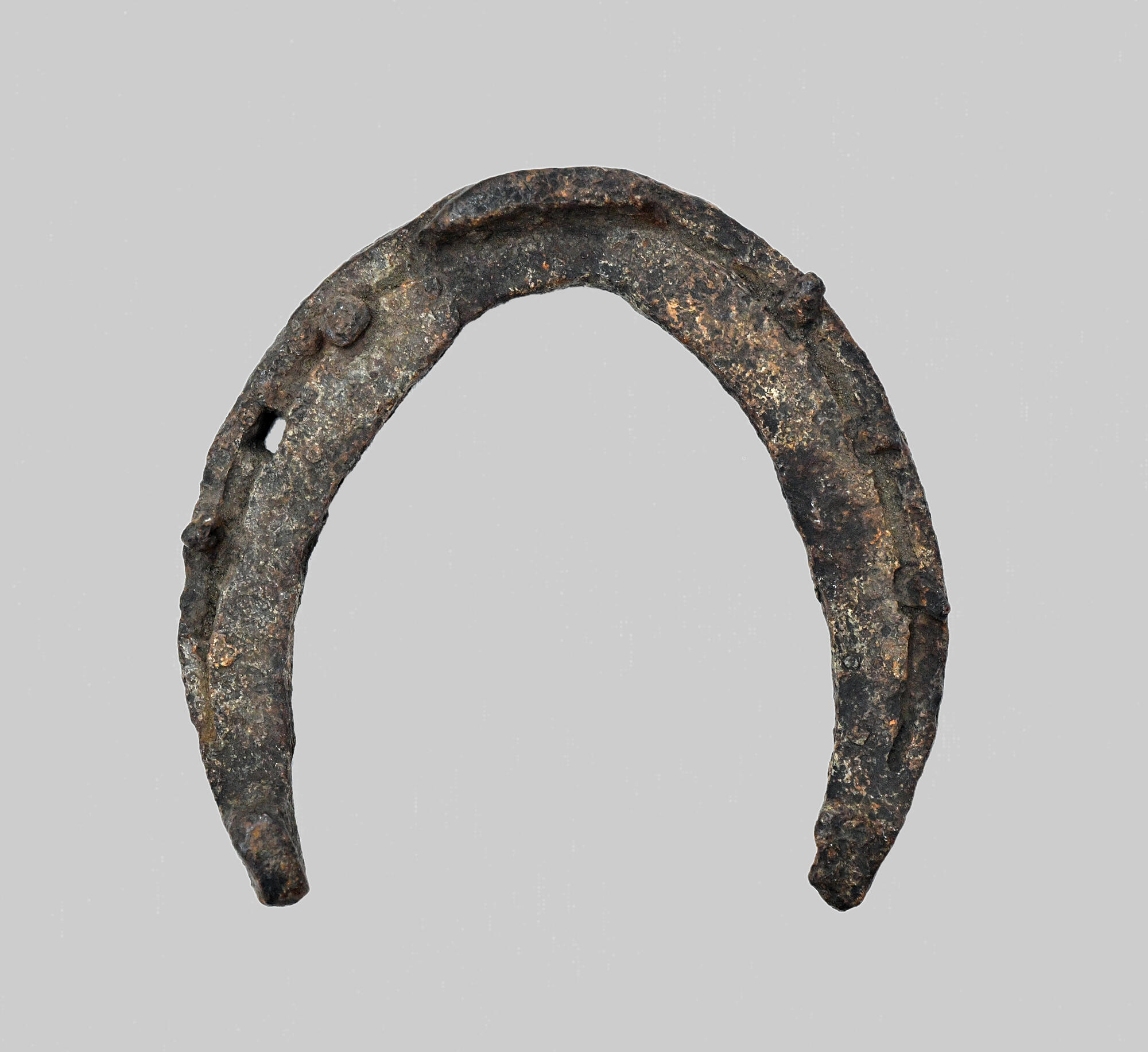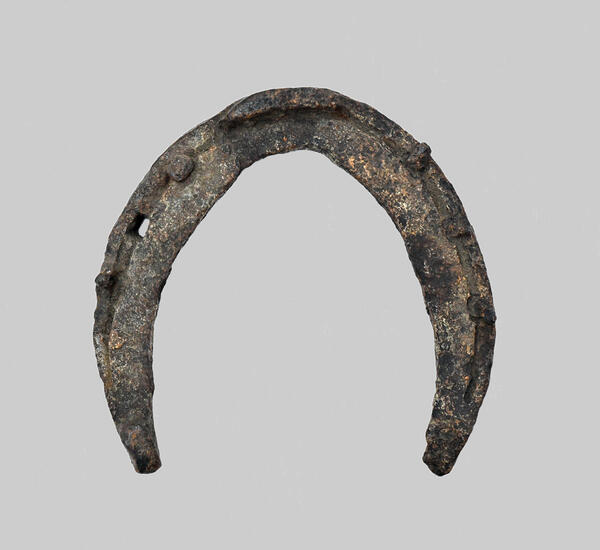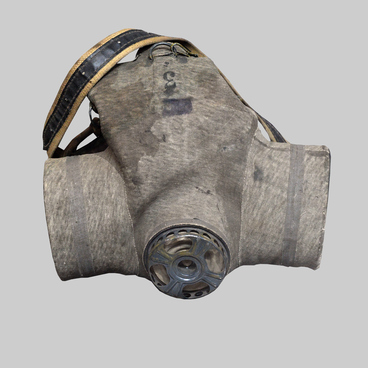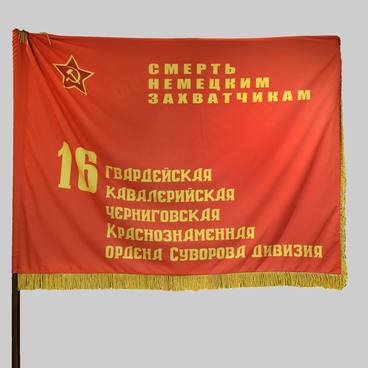A horseshoe is a metal plate that protects the horse’s hooves from wear and tear as well as against traumatic shocks on hard ground.
Shoeing is one of the most demanding operations in the horse care. Foot disorders are the most common health problems in horses. In most cases this is caused by poor quality shoeing and, accordingly, poor quality horseshoes. Horseshoes wore out quickly, because they were made of the softest and most malleable iron. Steel was not used, because a broken horseshoe could seriously injure the horse.
There are different horseshoes for front and hind hooves. According to the standard hoof sizes, horseshoes are available in 13 sizes. The weight of a horseshoe ranges from 300 g to 1.2 kg, and up to 900 g for a big cuirass horse. The width and thickness also depend on the size of the hoof and the use of the horse. The horseshoe on display may have been designed for a riding horse.
Making a horseshoe was the first test for the future blacksmith. To make one horseshoe, you had to perform 4-5 different operations (depending on the skill of the master). The blacksmith either made a horseshoe for a particular horse, or created a standard product that could later be adjusted to a particular hoof. Blacksmiths even have a rule — the horseshoe is fitted to the hoof, not the hoof to the horseshoe.
In 1929, an all-union standard for mechanically produced horseshoes with removable spikes for riding and harness horses was introduced. Ten horseshoe sizes corresponding to hoof sizes were standardized. But as the Great Patriotic War began, the machine-made horseshoe production was discontinued. The Main Intendant and Veterinary Administration of the Red Army approved handmade horseshoes with permanent spikes of five sizes for the wartime period.
Shoeing is one of the most demanding operations in the horse care. Foot disorders are the most common health problems in horses. In most cases this is caused by poor quality shoeing and, accordingly, poor quality horseshoes. Horseshoes wore out quickly, because they were made of the softest and most malleable iron. Steel was not used, because a broken horseshoe could seriously injure the horse.
There are different horseshoes for front and hind hooves. According to the standard hoof sizes, horseshoes are available in 13 sizes. The weight of a horseshoe ranges from 300 g to 1.2 kg, and up to 900 g for a big cuirass horse. The width and thickness also depend on the size of the hoof and the use of the horse. The horseshoe on display may have been designed for a riding horse.
Making a horseshoe was the first test for the future blacksmith. To make one horseshoe, you had to perform 4-5 different operations (depending on the skill of the master). The blacksmith either made a horseshoe for a particular horse, or created a standard product that could later be adjusted to a particular hoof. Blacksmiths even have a rule — the horseshoe is fitted to the hoof, not the hoof to the horseshoe.
In 1929, an all-union standard for mechanically produced horseshoes with removable spikes for riding and harness horses was introduced. Ten horseshoe sizes corresponding to hoof sizes were standardized. But as the Great Patriotic War began, the machine-made horseshoe production was discontinued. The Main Intendant and Veterinary Administration of the Red Army approved handmade horseshoes with permanent spikes of five sizes for the wartime period.



